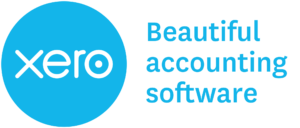 Soft skills are in great demand but short supply, according to many employers. But what are they? Soft skills are often described as being personality-based behaviours, such as working well in a team, taking direction, managing your time, and communicating clearly. Hard skills are related to your specific area of expertise, so being able to develop software is a hard skill, but collaborating with your colleagues is a soft skill.
Soft skills are in great demand but short supply, according to many employers. But what are they? Soft skills are often described as being personality-based behaviours, such as working well in a team, taking direction, managing your time, and communicating clearly. Hard skills are related to your specific area of expertise, so being able to develop software is a hard skill, but collaborating with your colleagues is a soft skill.
“At Fluidly we believe that engineering is a team sport so ‘soft’ skills are very important to us and we assess for them for every role,” says Fluidly founder, Caroline Plumb. “In particular, curiosity, communication, and empathy for people and customers are key skills we look for. We believe this makes the team stronger, product development faster (& more enjoyable) and customer experience far better. Technically brilliant candidates who don’t have these skills aren’t a fit for us – they might be talented individuals but we are looking for the people who make the team perform.”
Excellent soft skills are essential for small teams, as Inga Rudzitis, Operations Manager at Float points out: “We’re a fairly small team and we really pride ourselves on being one team. We don’t like to silo ourselves, so we work cross-departmentally all the time. This means soft skills like communication and teamwork are key for us. We’re also really interested in people’s potential, not only their past experience. Soft skills are typically the most transferable, so they’re a really meaningful part of understanding somebody’s potential.”
And as Faye Whitlock, head of talent at GoCardless, an online payments provider, points out, soft skills are important even in technical assessments. “Candidates are informed that we’re not looking simply at their coding skills and problem solving,” she says, “but collaboration and communication [as well]”.
Soft skills to develop
Our societal perceptions of soft skills do come with a gender bias that we, as individuals, need to be aware of. Women are often assumed to be good at communication and men are assumed to be good leaders, but that doesn’t mean that women can’t improve their communications skills, or that they can’t be good leaders. Of all the soft skills that women should focus on developing, Rudzitis believes that assertiveness should be at the top of the list.
“It’s a word that can get a bad rap because people confuse it with aggression, but that’s a real misrepresentation. It’s also not a personality type, it really is a skill that you can practise. When I chose to focus on improving my assertiveness it made a huge difference to my working life and it ultimately led me to joining the world of tech startups and working at Float.
“At its heart, assertiveness is all about being open and honest. It’s bound up with a host of other great soft skills such as active listening, communication, delegation, and receiving feedback well. It’s about learning to understand and value your own needs and opinions, expressing those appropriately, as well as being empathetic towards other people’s. Being more assertive can dramatically improve your management skills, relationships with other people, and your own happiness in your role.”
Women need to learn not to undersell themselves, Whitlock says. “Don’t be afraid of applying for jobs that feel like they may be out of your comfort zone. We think that a candidate’s attitude, motivation and aptitude for the role are more important than just a checklist of experience that they’ve done it all before.”
What are your strongest soft skills?
Of course, it’s easy to see soft skills in others, but slightly harder to know how good your own soft skills are. Plumb suggests that, if you want to understand your own soft skills repertoire, ask others for to tell you what they think your strengths and weaknesses are.
“Good people to seek input from are peers, reports, a line manager, a senior leader and someone outside the reporting line but who is also a stakeholder,” perhaps in a different team, says Plumb. “It’s good to get a wide range of opinions from people who’ve seen [you] in different circumstances, from succeeding to being up against it and under pressure. Ask open questions and listen hard for the answers without being defensive.”
Whitlock agrees: “Ask for feedback, always! We’re big fans of proactively asking for feedback on a daily basis, be it in spontaneous casual conversation or by emailing people after a project or meeting to ask about what they should keep doing and what they can improve. To candidates, ask for more detailed feedback to the recruiter.”
Rudzitis also suggests self-reflection as “a really valuable and under-appreciated practice. Whenever I get frustrated about something going on (at work or at home), I try to think about why I got so annoyed, why I responded the way I did. What result did I want from that situation and how would I try responding differently if this happened again? More often than not, this usually flags something I realise I should probably work on for myself. It can be really empowering because you learn to focus on what you can change, rather than blaming external circumstances or things beyond your control.”
Practice, practice, practice
It’s also a good idea to develop your soft skills outside of a work context. “Communication skills could be improved through drama, a toastmaster course or even comedy classes,” says Plumb. “Leadership could be for a project rather than running a team, or organising a large group activity. Think about opportunities to develop, make a plan of what you’re going to try and then reflect on it afterwards. The best way is to keep trying and learning – it doesn’t have to be perfect, some of the best learnings can come from the worse outcomes.”
That kind of self-development takes “bravery and practice,” says Rudzitis. “The more you practise something, the better you get at it. Sometimes it’s hard to take those steps though, which is where the bravery comes in. If it doesn’t come naturally to you, skills like networking can be so daunting, but ultimately you’ll never get better if you don’t take the plunge and give it a go. And then another go, and another!”
Rudzitis recommends that, in an interview, you use “the STAR method, describing the Situation, Task, Action taken, and Result” to illustrate your soft skills. “How did you identify the problem and analyse the situation that led you there? How did you communicate and work with others to solve the problem? Sometimes it can also be helpful to explain why you opted against an alternative course of action, as this can show a different side to your decision-making skills and an awareness that there are other ways of working.”
“Don’t be afraid to reach out to those in business that you think are particularly strong in a skill you want to develop and ask for their support and advice,” Whitlock advises. “You’ll be surprised by how much of a compliment this it to them and that they’ll usually be more than happy to help.”
Soft skills are very important to employers across the board, so when you’re writing your CV and preparing for an interview, spend some time reviewing your own soft skills and think about how you can most effectively communicate them. Demonstrating strong soft skills will help you gain the attention of recruiters and land that job!
 The Finding Ada Online Careers Fair for Women in STEM was sponsored by Xero, a beautiful, easy-to-use online accounting software for small businesses and their advisors. It has over one million subscribers in more than 180 countries, with more than 250,000 of those in the UK.
The Finding Ada Online Careers Fair for Women in STEM was sponsored by Xero, a beautiful, easy-to-use online accounting software for small businesses and their advisors. It has over one million subscribers in more than 180 countries, with more than 250,000 of those in the UK.
 Ada Lovelace Day are delighted to announce that our founder, Suw Charman-Anderson, will be one of the judges at the semi-final of the Virgin Media Business Voom Pitch 2018.
Ada Lovelace Day are delighted to announce that our founder, Suw Charman-Anderson, will be one of the judges at the semi-final of the Virgin Media Business Voom Pitch 2018. When you hear of companies ‘interviewing for cultural fit’, that often means that recruiters are looking for someone with a specific set of attitudes, assumptions and biases that they think will fit neatly into the existing cultural framework of the company. This can be problematic because it can damage efforts to increase diversity, resulting in a workforce that may look diverse but is actually made up of people who all think the same way.
When you hear of companies ‘interviewing for cultural fit’, that often means that recruiters are looking for someone with a specific set of attitudes, assumptions and biases that they think will fit neatly into the existing cultural framework of the company. This can be problematic because it can damage efforts to increase diversity, resulting in a workforce that may look diverse but is actually made up of people who all think the same way. 
 Soft skills are in great demand but short supply, according to many employers. But what are they? Soft skills are often described as being personality-based behaviours, such as working
Soft skills are in great demand but short supply, according to many employers. But what are they? Soft skills are often described as being personality-based behaviours, such as working  If you’re returning to the workforce after a career break, fractional – the new name for part-time work – or flexible work might be exactly what you need to get you back in the swing of things. With the competition for STEM talent heating up, more and more companies are offering flexible working schedules.
If you’re returning to the workforce after a career break, fractional – the new name for part-time work – or flexible work might be exactly what you need to get you back in the swing of things. With the competition for STEM talent heating up, more and more companies are offering flexible working schedules.  When applying for jobs, whether you’re a recent graduate, more experienced, or a returner, it can be difficult to know how to get your your CV into tip-top condition. Don’t worry. You’re not alone!
When applying for jobs, whether you’re a recent graduate, more experienced, or a returner, it can be difficult to know how to get your your CV into tip-top condition. Don’t worry. You’re not alone!